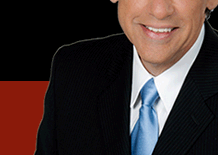|
Moron Breathing - or - More On Breathing...
August 27th, 2001
Now that you have a sense of what the 'BATS' acronym stands
for (Breathing, Audience, Three-part-rule, Set-up), we can
look a little closer at some of the principles behind breathing.
There is no part of performance more important than proper,
powerful breathing, and no part of performance that receives
less attention. The vast majority of performance problems
we as reporters or anchors face (shortness of breath, running
out of air, stuttering, problems with interpretation, too
much saliva in your mouth...) can be alleviated with proper
breathing.
In its simplest form, as described in the first installment,
your breathing should be diaphragmatic, that is to say from
your stomach and not from your upper chest. This may feel
peculiar at first as most of us are conditioned to breathe
in our upper chest, something the great voice teacher Kristin
Linklater calls "socialized breathing", since it often comes
from the social pressures to have a narrow waist, to hold
our stomachs in, to maintain a rigid posture.
Here are a couple of additional adjustment to add to your
diaphragmatic breathing:
First, when you inhale as normal (one hand on your stomach
which moves considerably, one on your chest which does not),
take in a bit more air - maybe only 10% more. Also, when you
normally exhale, push out a bit more - maybe only 10% more.
This simply adjustment - pulling in a bit more and pushing
out a bit more - suddenly increases your overall breathing
capacity extraordinarily.
Second, when you exhale, consciously release the muscles in
your body, from your shoulders down to your toes. You should
associate the process of exhaling with a distinct physical
pleasure, since it is at this phase of your breathing that
the oxygen is disolving into your lung tissues.
Third, with each suceeding breath, your body should relax
and release a little bit more, something like the way a car
on a tire jack drops a notch with each succeeding movement
of the lever. Each time you exhale, relax a little more. This
should be mindful, deliberate, and distinctly pleasurable.
Fourth, whenever you have inhaled and exhaled enough to feel
properly relaxed, as you prepare to take that big breath to
launch your story or performance, pull your thinking down
to the deepest part of your brain, and reflect on the great
privilage it is to be in front of that audience, telling them
stories and news that will inform, move, and perhaps entertain
them, and maybe even change their lives.
Fifth, as you inhale for this preparation to launch your story
and your performance, pause completely full of air, ready
to speak, with no tension. This is a really wonderful state
in which to find yourself. You are filled with oxygen, energized
and relaxed at the same time, focussed in your brain, and
ready to perform.
Overall, every breathing exercise we do is aimed at one thing:
increasing the amount of air available to exhale. We'll explain
what this means in future installments. In the meantime, breathe
deeply.
|

















